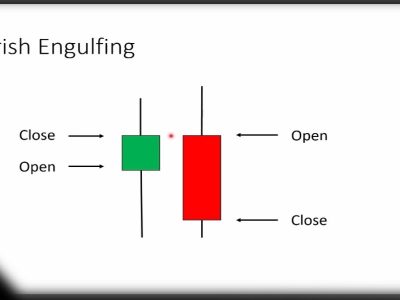Using divergence, you can find key trading positions. But how to use RSI divergence, and what are its uses in any trading?
RSI divergence occurs precisely when the Relative Strength Index indicator returns before the price. A bearish divergence involves over-buying the RSI after a low is within it. At the same time, asset prices should reach their highest level in the second peak if the RSI is lower. There is also an oversold position in the RSI in a bullish divergence. It appears after a lower minimum in the RSI chart. At the same time, the price must be less than the minimum.
Here are some examples of RSI divergence and see how you can make the most of such situations.
The RSI Divergence
Another usage of RSI divergence is to display the rate of change in price shocks exactly when you see a difference in the asset’s price. RSI divergence can also be used as a short-term signal, with investors using it to predict price returns.
Different approaches in RSI divergence
Graphically, showing RSI divergence is a bit difficult, but examples can be implemented to understand RSI divergence in Bearish and Bullish modes.
Bearish Divergence

The chart below shows a bearish divergence, the price finds two new highs, but the RSI reaches two highs.
This pattern indicates that positive shocks are slowly returning, and a downward trend is imminent.
One of the things mentioned in this case is that two divergences can be a buy or sell signal. In the first divergence, you have to start the deal. In the second divergence, you have to make a deal so as not to lose money.
So when your analysis of trade was fixed, reopen the position.
Bullish Divergence

As the name implies, bullish divergence is precisely the opposite of bearish divergence.
First, look for a buy signal in the RSI.
Then look for the lowest in price changes and the highest minimum in RSI. The signal does not have to be in the oversold range to confirm the signal.
RSI divergence confirmed
The first thing to check is that you can’t answer every signal positively and achieve profitability.
Most investors and traders who have just entered the market think that any signal can make them profitable.
Of course, such a thing is not possible. Every trade wins and loses.
However, it is best to do everything you can to make your divergence signal effective.
Fortunately, few variables lead entirely to the profitability of a divergence signal.
The first thing to look for alongside RSI divergence is whether the RSI is in a sell position or a buy position. This shows that the sudden rapid movements of the price will push it back with the same intensity.
In this case, you should look for the following situations:
- Oversold: The price has the lowest level, but the RSI reaches the highest level.
- Overbought: The price of one is the highest, but RSI is the lowest.
Also, keep in mind that the candle must reach its nearest state to confirm the RSI divergence signal.
Never trade before closing the candle and receiving confirmed divergence.
The best general settings for divergence
Just like other indicator-based trading strategies, the specific RSI settings are different for each trader. However, a default setting for RSI can be suggested:
- 14 period
- 30/70 signal levels
Optimization of trading methods based on RSI divergence
Now that you know what RSI divergence is and how it works, we need to show you how to optimize your trading strategies and make more profit. These methods can increase the amount of reward earned from each transaction.
Use Support and Resistance

You can increase your chances of winning trades by following RSI divergence’s support and resistance points.
The key is to look for solid points of resistance and support.
This is precisely where you can find an adequate signal. Check how much you need to follow to get to the support point.
Trailing Exit

Another function that increases the profitability of any trade with the RSI divergence strategy is to look for your Stop loss.
Just like other trading methods, changing the exit method has its advantages and disadvantages. When you use a trailing exit, your chances of winning the trade are likely to decrease.
If you want to look cheerful, trailing Stop loss can increase the overall profit from the transaction. You can also program your outputs automatically using robots and other algorithms.
One of the most commonly used methods is Parabolic SAR. This index places dots at the top or bottom of each candle so you can find the exit points.
For example, in a long trade, you can place a stop loss on one or two levels of PSAR before the current candle.

If you do not want to use the PSAR indicator, another way to implement a trail stop loss is to move to the next resistance or support point.
By trailing the stop loss on each blue line, you can profit by moving the price towards the target. This move could be more profitable than targeting 1R to the next level of support.
Fixed Profit Targets
If the uncertainty of the trailed profit targets does not work for you, or you do not want to use the resistance and support levels, you can choose fixed profit targets.
The best time to start fixed targets is to set orders on different levels of risk.
Example If you use 1x risk or 1R as a profit target, you can set a fixed profit target. So if your stop-loss is set to 100 pips, you can get a profit of the same 100 pips.
If you want to automate the targeting of the trailing stop, you can use the MetaTrader tool to do this to get the best profit.
This method is effective if your previous predictions about the price are correct, but suddenly the price has sudden movements contrary to your expectations.
Each platform offers different charts for analysis that you can use this type of strategy using the amount of profit and loss or risk limit drawn on the charts.
Do Divergence Strategies Fail?

Just like other trading methods, divergence is not always 100% certain.
In trend markets, the divergence trading strategy is likely to fail. If you do a lot of divergence trading on strong trends, you lose a lot of money.
So try to have significant risk and profit management before starting this method.
Try to identify trends before you start trading to avoid problems when implementing the strategy.
Also, the success rate of the transaction is adjusted based on your exit strategy and the execution quality. The ability to analyze the result is also involved.
General reasons for failure in trading strategies include the following.
- Not enough testing
- Giving up too early
- Not journaling your trades properly
- The strategy doesn’t have an edge
- Unrealistic expectations
- Not knowing your expected statistics
- Missing good trading opportunities
These problems always exist for all methods. However, you should choose strategies with a kind of exit time forecast to have the most negligible losses.
If after a few wins, once you lose, do not change the strategy. It may not be a problem of trading strategy.
Conclusion
So far, we have shown how RSI divergence as a trading routine can increase your profitability and increase trading efficiency.
Keep in mind that divergences may work well in some examples, but you have to experience and learn from them to use them in the best way and at best possible time to determine the entry and exit points.
You can start with complicated trading plans and backtesting. Then review the strategy and start trading usually. Use these methods to spend time in the market and analyze the result. You also need to adjust the exit points to control the amount of damage in the strategy.












